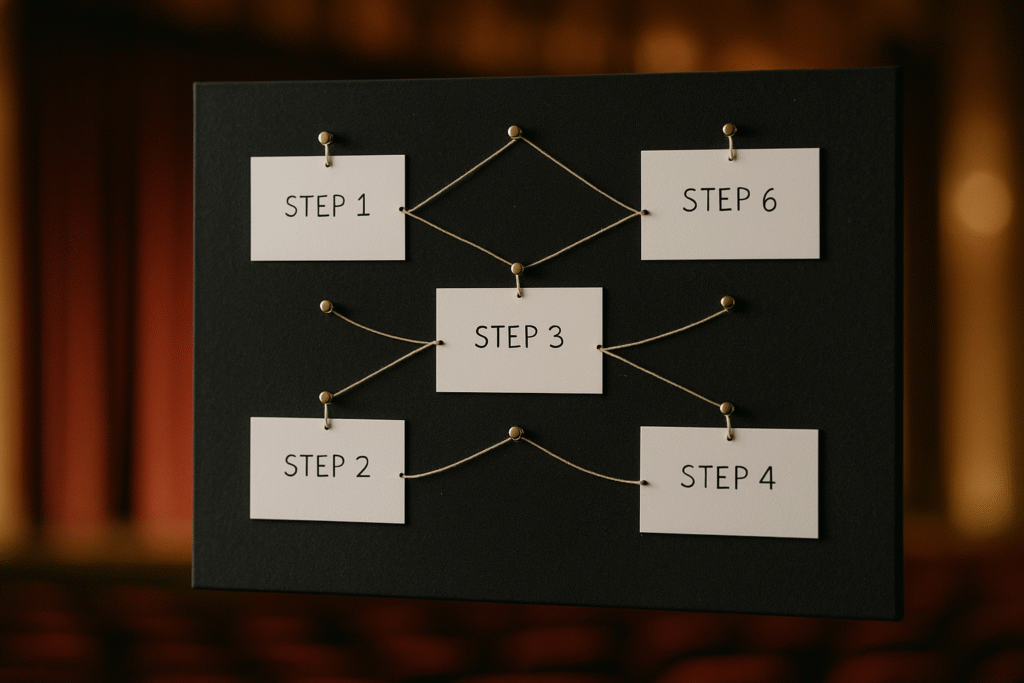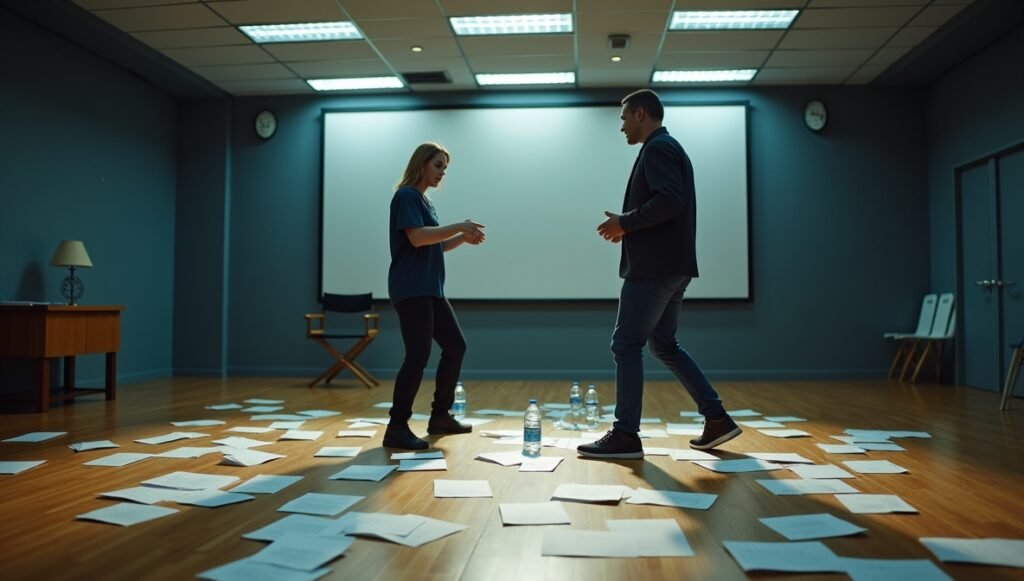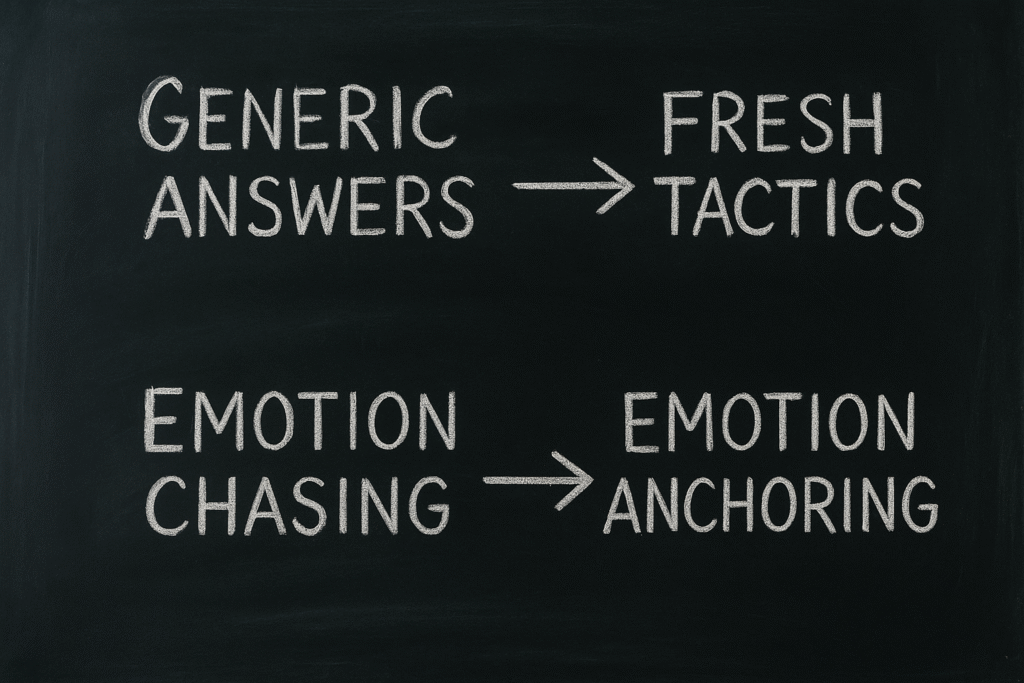Acting theories come and go, but certain frameworks become classics because they solve real problems actors face every day in rehearsal. Uta Hagen’s Six Steps—distilled in her seminal books Respect for Acting and A Challenge for the Actor—belong in that category.
Whether you are tackling Shakespeare, a contemporary indie film, or a 30-second commercial, the Six Steps provide a repeatable method for discovering character truth, clarifying playable objectives, and translating analysis into living behavior onstage or on camera.
Below you will find a deep dive into each step, practical exercises for the rehearsal room, audition-room adaptations, and tips for keeping the work fresh after opening night. Follow the sequence, and you will leave no stone unturned in building a full, believable life for any character.
1. Why the Six Steps Still Matter

Many modern techniques borrow freely from Stanislavski, Strasberg, Meisner, Adler, and Chekhov. Hagen’s contribution stands out for one key reason: it is built to be used on a specific scene today rather than as a vague theory of “good acting.” The Six Steps give you six focused questions. Answer them honestly and specifically and you will have:
- A coherent inner life that lines up with the script
- Concrete, playable objectives rather than abstract emotions
- A path for rehearsal that turns intellectual discoveries into spontaneous action
Think of the Six Steps like a surgeon’s checklist: simple, foolproof, and designed to avoid disastrous oversights. Miss one item and the whole operation—the scene—can fail. Master them and your work becomes clear, dynamic, and uniquely yours.
2. The Six Steps at a Glance

- Who am I?
- What are the circumstances?
- What are my relationships?
- What do I want?
- What is in my way?
- What do I do to get what I want?
Each question is deceptively straightforward. The artistry comes from drilling down to the most vivid, personal, and specific answers—answers you can play, not merely recite.
3. Step 1 – Who Am I? (Character Identity)

Purpose: Establish your character’s core identity. Pitfall: Mistaking biographical trivia for playable truth.
Key Elements to Define
| Facet | Guiding Questions | Rehearsal Tips |
|---|---|---|
| Name & Essence | How does my name sound to me? What labels do I accept or reject? | Repeat your name aloud in front of a mirror until it feels automatic. |
| Status & Self-image | Do I see myself as powerful, unseen, pitiable, heroic? | Choose three adjectives and embody each for 30 seconds. |
| Personal History | What single life event most shapes my worldview? | Write a one-page diary entry written this morning by the character. |
Exercise: The “Five-Minute Autobiography”
Without stopping, speak in first person for five minutes about where you were born, what you fear, and what you dream. Record it, listen back, and note any moments that felt invented versus inevitable. Keep the inevitable.
4. Step 2 – What Are the Circumstances?

Purpose: Anchor your character in time, place, and situation. Pitfall: Treating circumstances as atmospheric “flavor” instead of forces that change behavior.
The Circumstance Triangle
- Time: Year, season, time of day, and how much time has passed since the last major event.
- Place: Geographic location, immediate environment, and symbolic meaning of the setting.
- Prevailing Conditions: War vs. peace, economic boom vs. bust, personal crisis vs. ordinary day.
Exercise: The Sensory Walk-Through
Close your eyes and “walk” through the scene environment. Feel the floor texture, note the air temperature, hear distant sounds. Then run the scene immediately. Actors report sharper listening and more grounded blocking after this exercise.
5. Step 3 – What Are My Relationships?

Purpose: Define how you feel about every person, object, and concept in the scene. Pitfall: Reducing relationships to labels like “best friend” or “boss” without exploring value.
Three Relationship Layers
| Layer | Description | Example |
|---|---|---|
| Public | Titles, social roles | “That’s my CEO.” |
| Personal | Heart-level judgments | “I crave her approval more than anyone’s.” |
| Dynamic | How the relationship changes this moment | “I’m testing whether she’ll finally notice my talent.” |
Exercise: Object Interview
Choose one significant prop (a letter, a phone, a coffee mug). Speak to it as if it could answer. Ask why it matters, what memory it triggers, and what losing it would cost you. Suddenly, handling that object on stage gains new stakes.
6. Step 4 – What Do I Want? (Objective)

Purpose: Identify a specific, urgent goal that drives your behavior. Pitfall: Stopping at “I want to be happy” or “I want love,” which are states, not objectives.
Crafting High-Voltage Objectives
- Use a transitive verb: To convince, to seduce, to expose, to rescue.
- Aim at the partner: Objectives must land on someone or something tangible.
- Set the stakes: What happens if you succeed or fail? Life, death, promotion, disgrace?
Exercise: Objective Ladder
Write your objective. Now rewrite it five times, each time making it more specific and high-stakes. “To get him to sign the contract today before the rival arrives” plays better than “to close the deal.”
7. Step 5 – What Is in My Way? (Obstacle)

Purpose: Discover the resistance that forces you to engage fully. Pitfall: Forgetting that obstacles can be internal (fear) as well as external (locked door).
Mapping Obstacles
| Type | Examples in Text | Actor Translation |
|---|---|---|
| Physical | Crowded room, broken phone, storm | Adjust vocal projection, movement choices |
| Personal | Partner’s skepticism, rival’s charm | Shift tactics—flatter, threaten, plead |
| Psychological | Self-doubt, guilt, trauma | Embody hesitation, nervous gestures |
Exercise: Obstacle Improv
Play the scene once normally. Then replay with an exaggerated new obstacle: the floor is suddenly lava; every time you lie a bell rings; or you cannot say the letter “N.” Return to normal text and notice richer tactics.
8. Step 6 – What Do I Do to Get What I Want? (Action/Tactics)

Purpose: Select playable verbs that answer obstacle with behavior. Pitfall: Confusing action with emotion (e.g., “I feel sad” is not playable, “I beg” is).
Tactic Toolbox
- Attack – to ridicule, to intimidate
- Appeal – to charm, to seduce
- Negotiate – to bargain, to compromise
- Withdraw – to shame, to stonewall
- Transform – to inspire, to heal
Exercise: Verb Relay
List ten strong verbs. Run the scene hitting each verb for one line before moving to the next. Discard the clunky ones, keep the electric ones.
9. Building a Scene Score with the Six Steps

- Table Work: Outline answers in a notebook.
- Beat Breakdown: Slice the scene where the tactic shifts. Assign a verb to each beat.
- Physical Anchors: Attach simple gestures or focal points to major beats.
- Exploration Rehearsals: Improv around circumstances and obstacles.
- Run-throughs: Integrate voice, blocking, and partner connection.
Consistency comes from the written score; spontaneity comes from playing off the score rather than reciting it.
10. Rehearsal Process in Practice

Week 1 – Investigation: Table work, personal research, diary entries.
Week 2 – Experimentation: Blocking, objective/tactic drills, obstacle improvisations.
Week 3 – Integration: Run-throughs adding costume pieces, dialect, props.
Week 4 – Performance Polish: Technical adjustments, pacing, audience relationship.
By revisiting the Six Steps at the start of each rehearsal week, you guard against mechanical line readings and re-ignite purpose.
11. Adapting to Genre and Medium

Classical Text
- Language as obstacle: Dense rhetoric makes desire harder to express. Clarify verbs.
- Heightened stakes: Royal politics or cosmic forces raise objective urgency.
Contemporary Drama
- Subtext over text: Objectives may hide beneath casual phrasing; listen for what is not said.
- Naturalistic behavior: Smaller physical choices read as truthful.
On-Camera Work
- Micro-objectives per shot: Film coverage can split one theatrical beat into multiple camera angles.
- Obstacle of lens distance: A close-up removes physical tactics; internal obstacles dominate.
12. Rapid Application for Auditions

- 60-Second Script Scan: Identify objective and obstacle.
- Partner Proxy: Even if reading to a camera, imagine the partner beside the lens.
- Mini Verb Map: Pick three tactics for the brief sides—beginning, middle, end.
- Physical Anchor: One subtle gesture that cues the biggest beat shift.
This streamlined Six-Step version keeps your choices bold yet flexible under time pressure.
13. Common Pitfalls and How to Fix Them

| Pitfall | Symptom | Fix |
|---|---|---|
| Generic Answers | Scene feels unmotivated | Drill specificity exercises (Objective Ladder) |
| Emotion Chasing | Forced tears, uneven energy | Replace emotion goal with action verb |
| Skipping Relationships | Flat interaction | Do the Object Interview and Partner Biography |
| Static Tactics | Monotone delivery | Run Verb Relay, then select varied verbs |
| Forgetting Stakes | Low urgency | Invent consequences 10× bigger than comfort zone |
14. Collaborating with Directors and Partners

- Share Your Score: Offer your Six-Step worksheet to the director; invite feedback.
- Negotiate Objectives: Two actors with opposing but clear objectives create tension.
- Yes-and Blocking: Let physical choices evolve from tactics, not the other way around. Contradictions get resolved through rehearsal conversation, not stubbornness.
15. Keeping the Work Alive in Performance

Opening night is the beginning of discovery, not the end. Check your Six Step answers before each show. Ask:
- Did the matinee audience laugh in an unexpected spot? Adjust obstacle stakes.
- Did your scene partner surprise you with a new inflection? Honor it; shift tactic.
- Did the camera angle change for tonight’s live stream? Rebalance physical vs. internal action.
Treat the Six Steps as an ever-updated map rather than a finished portrait.
16. Conclusion: Mastery through Methodical Curiosity

Uta Hagen believed acting is “the discovery of life under imaginary circumstances.” The Six Steps are her gift for making that discovery systematic without crushing creativity. Use them faithfully and you will:
- Enter each scene with clear purpose
- React truthfully under pressure
- Deliver performances that directors trust and audiences feel
Keep the checklist in your rehearsal bag. Over time the questions will become second nature, and your artistry will expand because the groundwork is unshakable.

